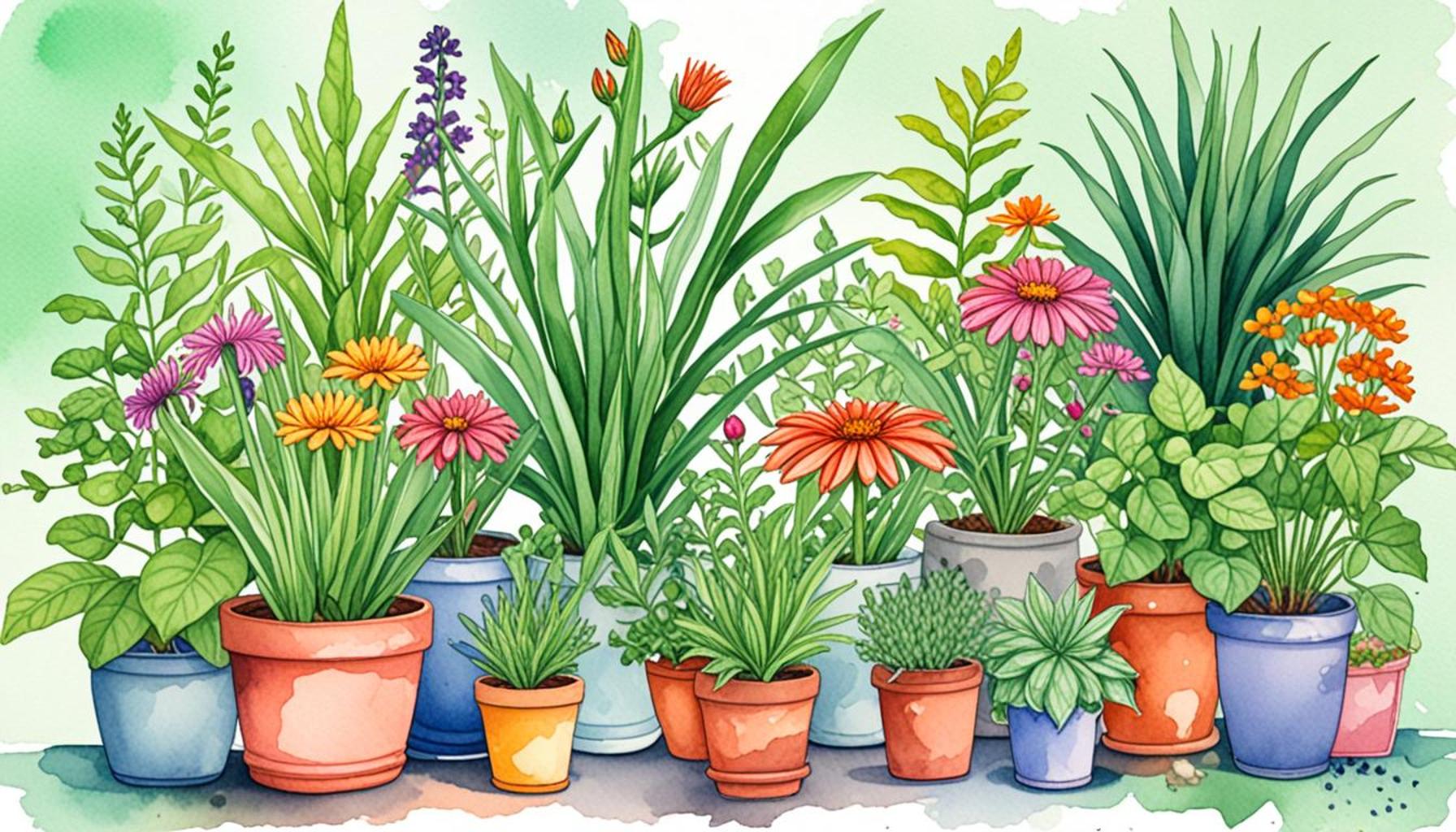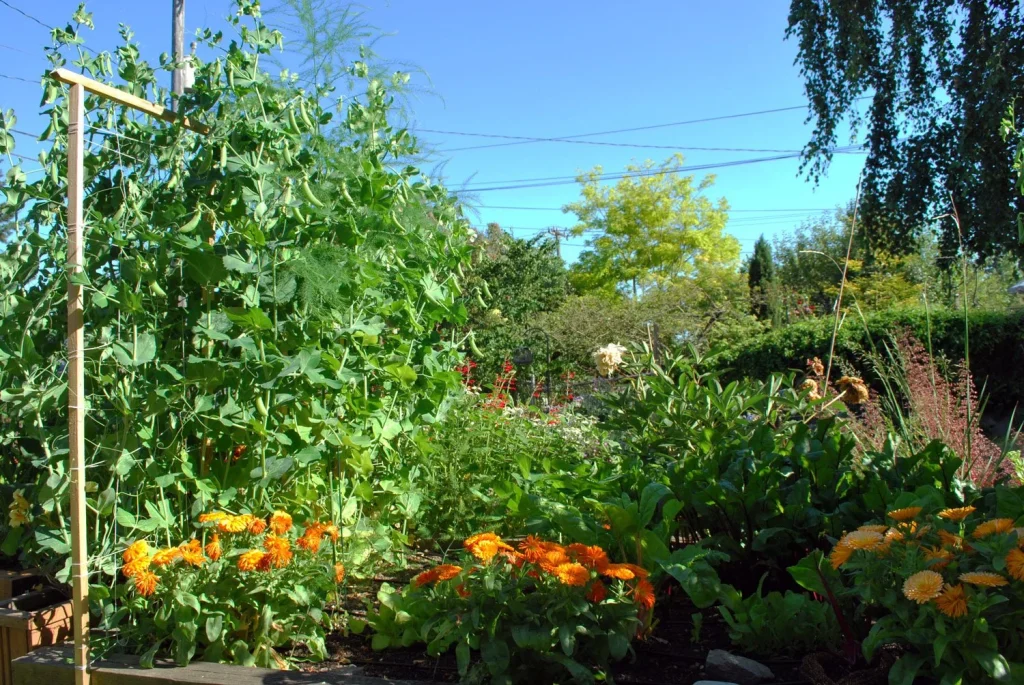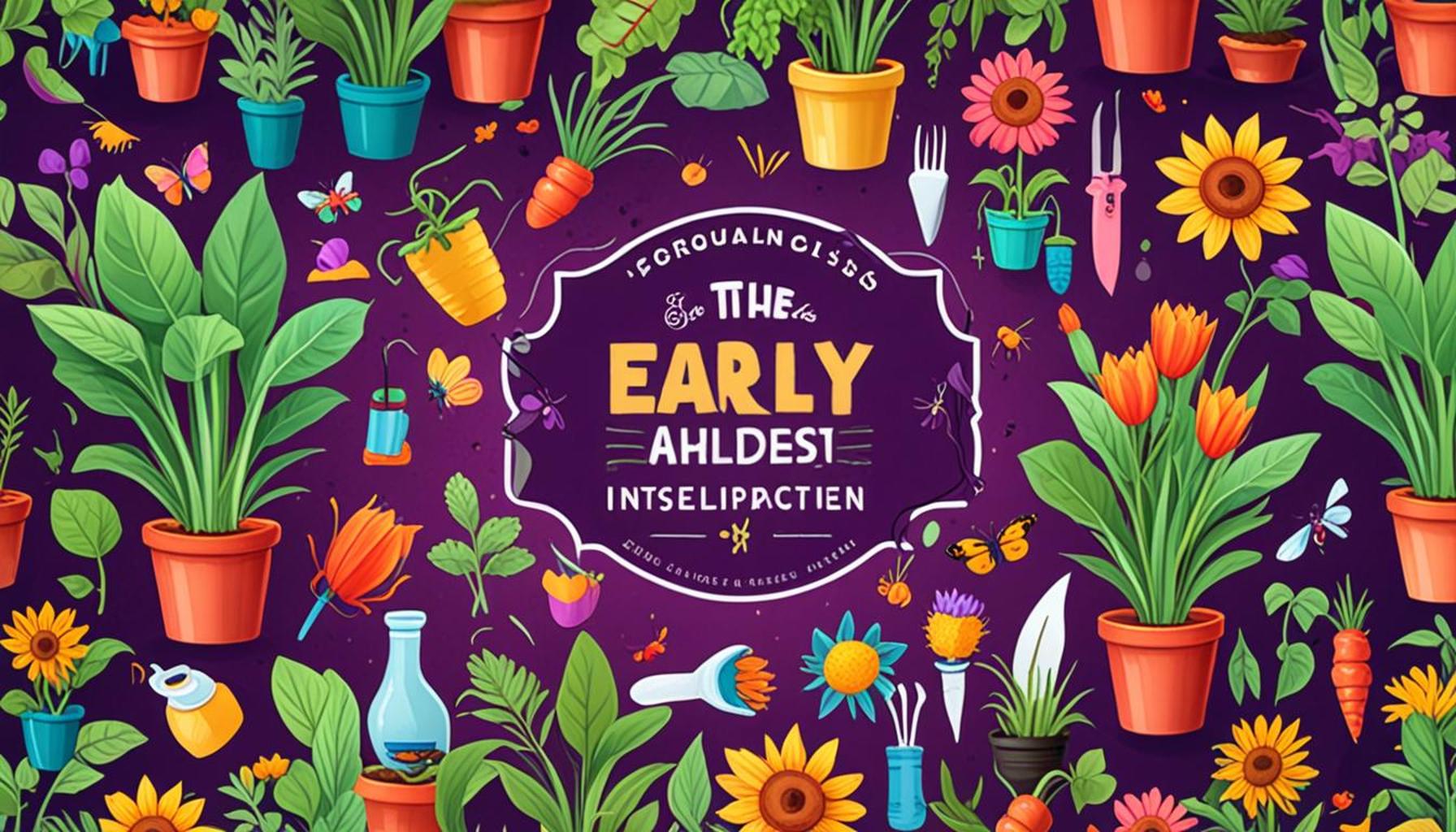Using Companion Plants to Repel Pests in Home Gardens

Understanding Companion Planting
Gardening is not just a hobby; it’s a passion that intertwines balance with nature, and companion planting epitomizes this connection beautifully. This method has roots in ancient agricultural practices, making it a time-tested strategy for not only enhancing the growth of plants but also establishing a self-sustaining ecosystem within the garden.
Pest Repellence
One of the primary advantages of companion planting is its ability to create a pest-repelling environment. For instance, plants like lavender and rosemary exude aromas that many pests find unappealing. By planting these herbs around sensitive plants, gardeners can drastically reduce the need for chemical pesticides, promoting a healthier garden environment. The vitality of plants such as cucumbers can be significantly enhanced when paired with nasturtiums, which not only deter aphids but can also attract beneficial insects.
Attracting Beneficial Insects
Another remarkable aspect of companion planting is its ability to attract beneficial insects. For example, flowering plants such as yarrow and dill serve as beacons for ladybugs and lacewings, which are natural predators of aphids and other common garden pests. By strategically incorporating these plants, gardeners can build a natural predator-prey dynamic, significantly curtailing pest populations without harmful chemicals. This reduces the likelihood of pest outbreaks, providing a more sustainable and resilient garden ecosystem.
Improving Soil Health
Companion planting doesn’t just focus on plants in isolation; it also emphasizes the health of the soil. Certain plants, such as clover and legumes, can fix nitrogen in the soil, enriching it for neighboring plants. This symbiotic relationship not only improves soil fertility but can also reduce the need for synthetic fertilizers. Additionally, deep-rooted plants like daikon radishes can help break up compacted soil layers, allowing for better water infiltration and root development for surrounding plants.

As the gardening community in the United States continues to embrace sustainable practices, the significance of companion planting becomes increasingly pronounced. Home gardeners are turning to this ancient practice to create beautiful, flourishing gardens that thrive naturally and minimize destruction caused by pests. Explore the world of companion planting further, and you may discover an array of beneficial plant combinations that not only transform your garden but could also offer a profound appreciation for nature’s intricacies.
DIVE DEEPER: Click here to uncover the benefits of rainwater irrigation
Creating Natural Barriers with Companion Plants
Companion planting is an ingenious method that allows gardeners to use nature’s own resources to manage pests within their home gardens effectively. Rather than relying solely on synthetic pesticides, this approach encourages the integration of various plants that can either repel unwanted visitors or attract beneficial allies to the garden. Understanding how to create effective combinations can be the key to cultivating a lush, thriving ecosystem.
Foundational Principles of Pest Repellence
At the core of successful companion planting for pest control lies the organic chemistry of plants. Some flora release natural oils or aromas that deter common pests, turning the garden into a sanctuary for desirable species. Plants like marigolds, known for their vibrant color and distinctive scent, can repel nematodes and certain types of aphids. By including these alongside your vegetable beds, you may significantly decrease the presence of these unwanted pests.
Another popular pairing involves basil and tomatoes. The scent of basil is notorious for repelling tomato hornworms and whiteflies. By planting these together, not only do you enhance the flavor of your tomatoes, but you also create a natural shield against these destructive pests.
Examples of Effective Companion Plant Combinations
To optimize your garden’s health and pest resistance, consider incorporating the following companion plant combinations:
- Roses and Garlic: Roses are often targeted by aphids, but planting garlic nearby can repel these pests while promoting healthy rose growth.
- Cabbage and Aromatic Herbs: Herbs like sage and mint can deter cabbage moths when planted alongside cabbage, thus protecting your crop.
- Squash and Nasturtiums: Nasturtiums act as a trap crop, luring pests away from squash plants, particularly aphids and cucumber beetles.
- Beans and Corn: The nitrogen-fixing capability of beans benefits corn growth, while the corn provides support for the climbing bean plants.
These combinations not only help manage pest populations but can also attract beneficial insects that are crucial for pollination and natural pest control. In a world increasingly supportive of organic gardening, understanding these dynamics may be the stepping stone to cultivating a self-regulating garden environment.
Enhancing Biodiversity
Implementing companion planting principles enriches biodiversity in home gardens. The strategic introduction of diverse species encourages a wider range of pollinators and predatory insects, playing an integral role in sustaining healthy plant growth. As gardens become more diverse, they will naturally balance themselves, ultimately leading to lower pest occurrences and enhanced crop yields. Home gardeners who embrace this method not only improve their own crop health but also contribute to the sustainability of local ecosystems.
Through the understanding and application of companion planting techniques, gardeners can empower themselves with the tools needed to create vibrant, healthy, and pest-resistant gardens without compromising on environmental integrity. The journey into this fascinating realm of gardening is not just about coexistence; it’s about building resilience through strategic plant pairings that harmonize with nature’s design.
| Advantage | Description |
|---|---|
| Natural Pest Control | Companion plants can naturally deter pests without the use of harmful pesticides, creating a healthier garden ecosystem. |
| Enhanced Plant Growth | When certain plants are paired, they can boost each other’s growth, resulting in more robust crops. |
| Biodiversity | Using companion plants increases biodiversity, leading to a more resilient garden that can better withstand pest invasions. |
| Attract Beneficial Insects | Certain companions attract beneficial insects like ladybugs and lacewings, which help control pest populations. |
Companion planting is not just a method for pest control; it also plays a vital role in promoting a thriving home garden ecosystem. By introducing a selection of plants known to work harmoniously together, gardeners can create a balanced environment. For instance, marigolds are famous for their ability to repel nematodes and other pests, making them excellent partners with various vegetables and herbs. Additionally, plants such as basil not only enhance flavor when paired with tomatoes but also offer protection against aphids and whiteflies. This strategic integration of companion plants can significantly diminish reliance on chemical interventions while simultaneously improving growth outcomes. Overall, by implementing companion plant strategies, home gardeners can enjoy an organic approach to cultivating their green spaces, ultimately leading to a healthier, more productive garden.
DISCOVER MORE: Click here to learn about selective harvesting
Understanding the Role of Beneficial Insects
While companion plants are instrumental in repelling harmful pests, the presence of beneficial insects plays an equally pivotal role in pest management within home gardens. By understanding how to invite these allies, gardeners can enhance their ecosystem and create a harmonious balance that fosters plant health.
Types of Beneficial Insects to Attract
Several species of insects are recognized champions of natural pest control. For instance, ladybugs are voracious consumers of aphids, while lacewings target aphids, thrips, and other prey found in gardens. Integrating plants that appeal to these beneficial insects can significantly enhance pest management strategies.
Plants such as fennel, dill, and yarrow not only attract these helpful insects but also provide flowers rich in nectar and pollen, fostering a feeder-friendly environment. In particular, flowering herbs are beneficial in this regard. For example, when gardeners include flowers like cosmos or sunsflowers amidst their vegetable plots, they open the door to a wide range of pollinators as well as pest predators.
Creating Habitats for Insects
Incorporating diverse plant species is one way to create habitats that support beneficial insects. Using plant layers—such as stacking taller plants like sunflowers alongside shorter herbs or ground cover—can help provide shelter for these allies. Furthermore, leaving patches of wild or native plants can provide essential resources and nesting sites for beneficial insects.
Another effective strategy involves the use of a companion plants strategy called intercropping. By alternating rows of flowers, herbs, or legumes between rows of crops, gardeners can decrease the likelihood of pest infestations while simultaneously encouraging beneficial insects to thrive. This practice not only supports pest management but can also enhance soil health by reducing erosion and boosting nutrient levels through crop rotation.
Complementing Companion Planting with Organic Practices
To further bolster the efficacy of companion planting, gardeners can adopt complementary organic practices. Techniques such as mulching, for instance, can help retain soil moisture, suppress weeds, and enhance soil fertility, creating an even healthier environment for companion plant combinations to flourish. Additionally, maintaining proper garden hygiene—like removing any debris or diseased plants—can deter pests from taking hold and create a more robust ecosystem.
Moreover, practicing crop rotation is essential in preventing pest build-up. By changing the location of crops yearly, gardeners disrupt pest and disease cycles, making it harder for them to establish themselves in the garden. This strategy dovetails with companion planting, as rotating plants will also allow the beneficial interactions between different species to be better utilized.
Harnessing the Power of Scent
The power of plant scents is an underexplored yet impactful aspect of companion planting. The strategic placement of scented herbs such as lavender and rosemary can deter pests through their aromatic properties while simultaneously attracting beneficial bee species for pollination. The intertwining of these scents throughout the garden not only repels harmful insects but also creates a fragrant oasis that enhances the gardening experience.
By tapping into the myriad of ways that plants interact with pests and their natural enemies, home gardeners can effectively harness the power of companion plants to maintain a thriving habitat that supports both crop production and ecological stability.
DISCOVER MORE: Click here to learn about rainwater irrigation techniques
Conclusion: Embracing the Synergy of Companion Planting
In the quest for sustainable gardening, using companion plants to repel pests presents an innovative and environmentally friendly strategy that can profoundly benefit home gardens. By understanding the intricate relationships between plants and pests, gardeners can effectively utilize a diverse range of flora to create a thriving ecosystem. From harnessing the natural pest-repelling properties of certain herbs to inviting beneficial insects that serve as formidable allies in pest control, the principles of companion planting illustrate that a holistic approach can lead to healthier plants and bountiful yields.
The synergy created through intercropping and careful plant selection not only supports pest management but also enhances soil health and biodiversity within the garden. As gardeners establish habitats that nurture beneficial insects while strategically positioning aromatic and flowering plants, they foster a natural balance that minimizes reliance on chemical interventions.
Furthermore, supplementing these practices with organic methods like mulching, proper hygiene, and crop rotation amplifies the benefits of companion planting. In essence, embracing the art of planting companions can transform home gardens into vibrant ecosystems that thrive on cooperation and resilience. For those eager to explore further, numerous resources are available that delve into the specific combinations of plants that yield the best results.
Ultimately, understanding and implementing companion planting techniques empowers gardeners to take charge of their pest management in a creative, eco-conscious manner. By integrating these strategies into their gardening routines, enthusiasts not only cultivate productive plants but also contribute to the preservation of healthy ecosystems in their own backyards.


